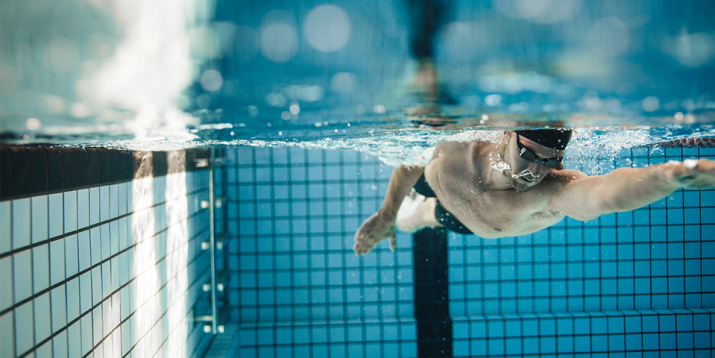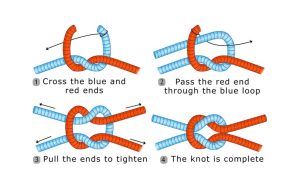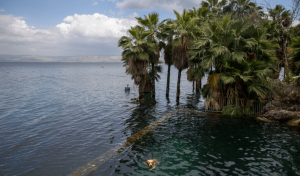Jump in with us! We’re diving deep into swimming, and we want you to come along. Think about swimming as more than just fun. It’s a sport and a way to reach your fitness goals. Let’s learn together how fast you can swim a mile, how it affects your training, and how it matters in races. We’ll also chat about what makes you swim faster, why keeping fit matters, and how laps in the pool add up to miles.
Styles of Swimming and Their Speed
There are four main ways to swim, each one making you swim at different speeds:
- Freestyle: You swim on your front and move super fast. It’s a favorite for many swimmers.
- Backstroke: You swim on your back and can breathe easily, but it’s usually not as fast as freestyle.
- Breaststroke: This way is harder and slower than freestyle and backstroke.
- Butterfly: This style is powerful and fast but takes a lot of energy.
How Long Does It Take the Average Man to Swim a Mile?
We often get asked, “How long does it take the average man to swim a mile?” The answer isn’t as straightforward as you might think. It depends on several factors, including personal fitness level and swimming technique.

Factors influencing the time it takes to swim a mile
Swimming a mile isn’t just about jumping in the pool and starting to swim. Two key factors play a significant role in determining how long it will take.
- Personal fitness level: A person’s cardiovascular fitness and muscle strength heavily influence the speed at which they can swim a mile. A fitter individual will generally swim faster and thus, complete a mile in less time.
- Swimming technique and efficiency: A swimmer’s technique can drastically impact their swimming speed. Efficient strokes and proper breathing techniques help conserve energy, enabling the swimmer to maintain a steady pace over longer distances.
Average speed of a male swimmer
The average speed of a male swimmer can vary greatly based on their fitness level and swimming experience. Let’s compare the average speeds for male swimmers with different experience levels and see how they stack up against women swimmers.
- Comparison with women’s speed: On average, men tend to swim slightly faster than women. However, the gap is narrowing, especially at elite levels, thanks to advances in training techniques and nutrition.
- Speed range for professional and amateur swimmers: Professional swimmers can typically swim a mile in around 20 minutes or less, while amateur swimmers might take anywhere from 30 minutes to an hour, depending on their fitness level and technique.
Read more: Can You Swim in Big Bear Lake?
Why Fitness Matters in Swimming
We all know that being fit can make a big difference when swimming. It’s like having a top-notch engine in a race car.
Two things that shape your swimming speed are your heart’s strength and your muscles.
Imagine your heart as a mighty engine. The stronger it is, the better it sends oxygen all over your body. This helps you swim without getting tired too quickly and keeps up your speed.
Your muscles are like the oars of a boat. The stronger they are, the faster you can row. The same goes for swimming! Plus, being flexible helps you swim smoothly and saves your energy.
Being fit doesn’t just make you fast; it also helps you swim a mile in less time. If you keep working out, you’ll become stronger and faster. This means you can swim a mile quicker than before.
How Many Laps is One Mile Swimming?
Swimming, as we all know, is a delightful sport, fantastic for overall fitness. But when it comes to calculating distances, things may get a little tricky.
So, how many laps in a pool equal a mile? The answer depends on the length of your pool. If you’re swimming in a typical 25-yard pool, you’ll need to complete 70.4 laps to equal a mile. In a 25-meter pool, this increases to 64.4 laps, and in a 50-meter pool, you’d only need to swim 32.2 laps.

Tips to Improve Swimming Speed
Your swimming style is key. A good style makes you slide through water like a hot knife through butter. It saves your energy, letting you swim faster and longer.
You can swim faster by improving each stroke. For freestyle, keep your body steady and your hand movements strong. In breaststroke, focus on your kicks and glides. For butterfly, you need a powerful dolphin kick and timed arm movements. And for backstroke, keep your body and kicks steady. Practice makes perfect, so keep at it!
Endurance training helps you swim farther without getting tired. It’s like a magic potion for speed. The more you can swim without getting pooped, the faster you’ll be.
Read more: Can You Paddle Board in the Ocean?
Conclusion
Swimming a mile involves various styles, factors, and fitness levels. Your choice of stroke, personal fitness, and technique significantly affect your swim time. The average speed varies, with fitness playing a crucial role.
Being fit is like having a powerful engine and strong oars, making you faster and more efficient. Pool length matters in distance calculations, and improving your swimming style and endurance can help you swim faster.
Swimming a mile is a journey that combines skill, fitness, and dedication. Keep improving and enjoy the water, whether for competition or leisure.



